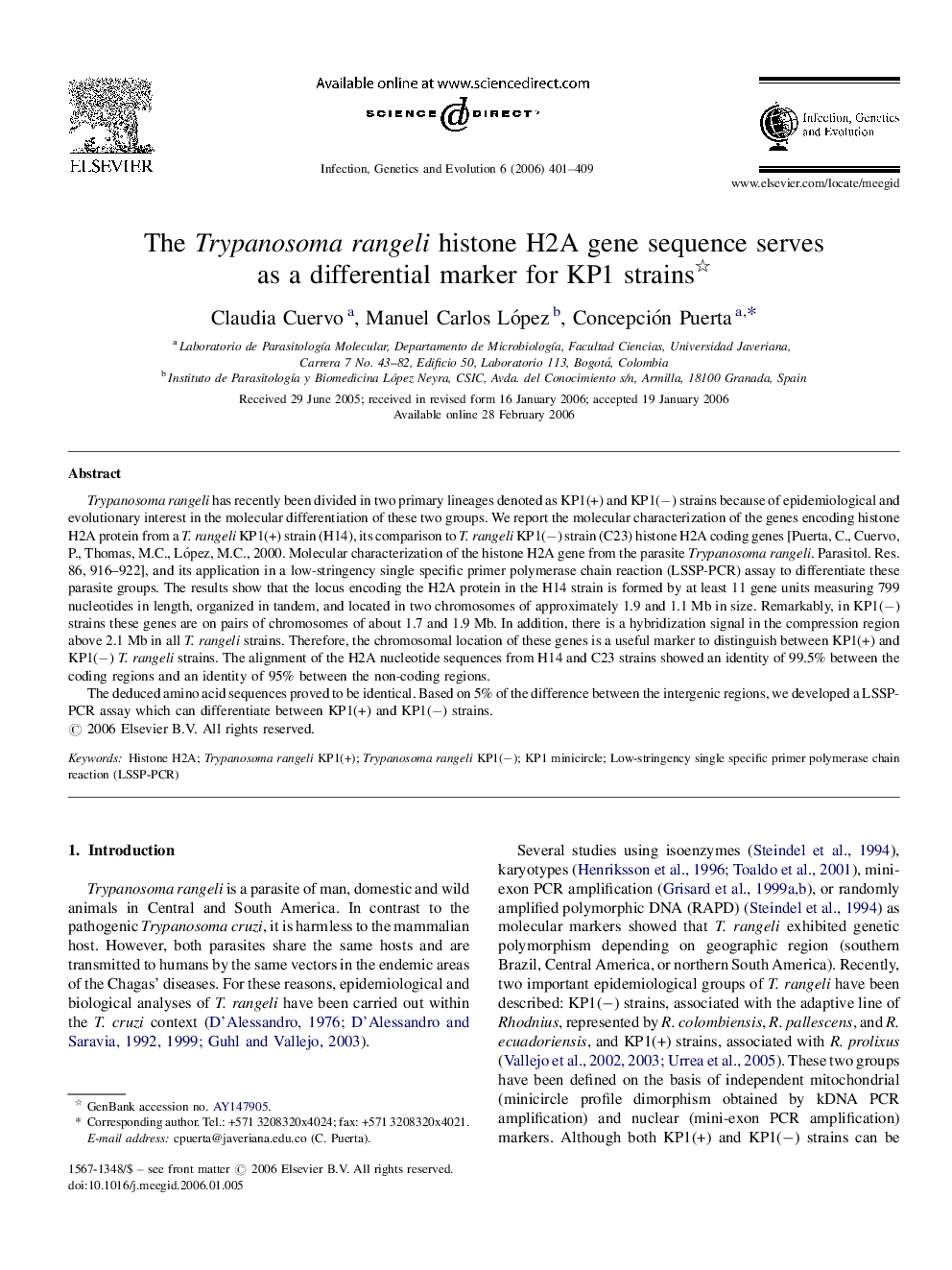| کد مقاله | کد نشریه | سال انتشار | مقاله انگلیسی | نسخه تمام متن |
|---|---|---|---|---|
| 2823761 | 1161405 | 2006 | 9 صفحه PDF | دانلود رایگان |

Trypanosoma rangeli has recently been divided in two primary lineages denoted as KP1(+) and KP1(−) strains because of epidemiological and evolutionary interest in the molecular differentiation of these two groups. We report the molecular characterization of the genes encoding histone H2A protein from a T. rangeli KP1(+) strain (H14), its comparison to T. rangeli KP1(−) strain (C23) histone H2A coding genes [Puerta, C., Cuervo, P., Thomas, M.C., López, M.C., 2000. Molecular characterization of the histone H2A gene from the parasite Trypanosoma rangeli. Parasitol. Res. 86, 916–922], and its application in a low-stringency single specific primer polymerase chain reaction (LSSP-PCR) assay to differentiate these parasite groups. The results show that the locus encoding the H2A protein in the H14 strain is formed by at least 11 gene units measuring 799 nucleotides in length, organized in tandem, and located in two chromosomes of approximately 1.9 and 1.1 Mb in size. Remarkably, in KP1(−) strains these genes are on pairs of chromosomes of about 1.7 and 1.9 Mb. In addition, there is a hybridization signal in the compression region above 2.1 Mb in all T. rangeli strains. Therefore, the chromosomal location of these genes is a useful marker to distinguish between KP1(+) and KP1(−) T. rangeli strains. The alignment of the H2A nucleotide sequences from H14 and C23 strains showed an identity of 99.5% between the coding regions and an identity of 95% between the non-coding regions.The deduced amino acid sequences proved to be identical. Based on 5% of the difference between the intergenic regions, we developed a LSSP-PCR assay which can differentiate between KP1(+) and KP1(−) strains.
Journal: Infection, Genetics and Evolution - Volume 6, Issue 5, September 2006, Pages 401–409